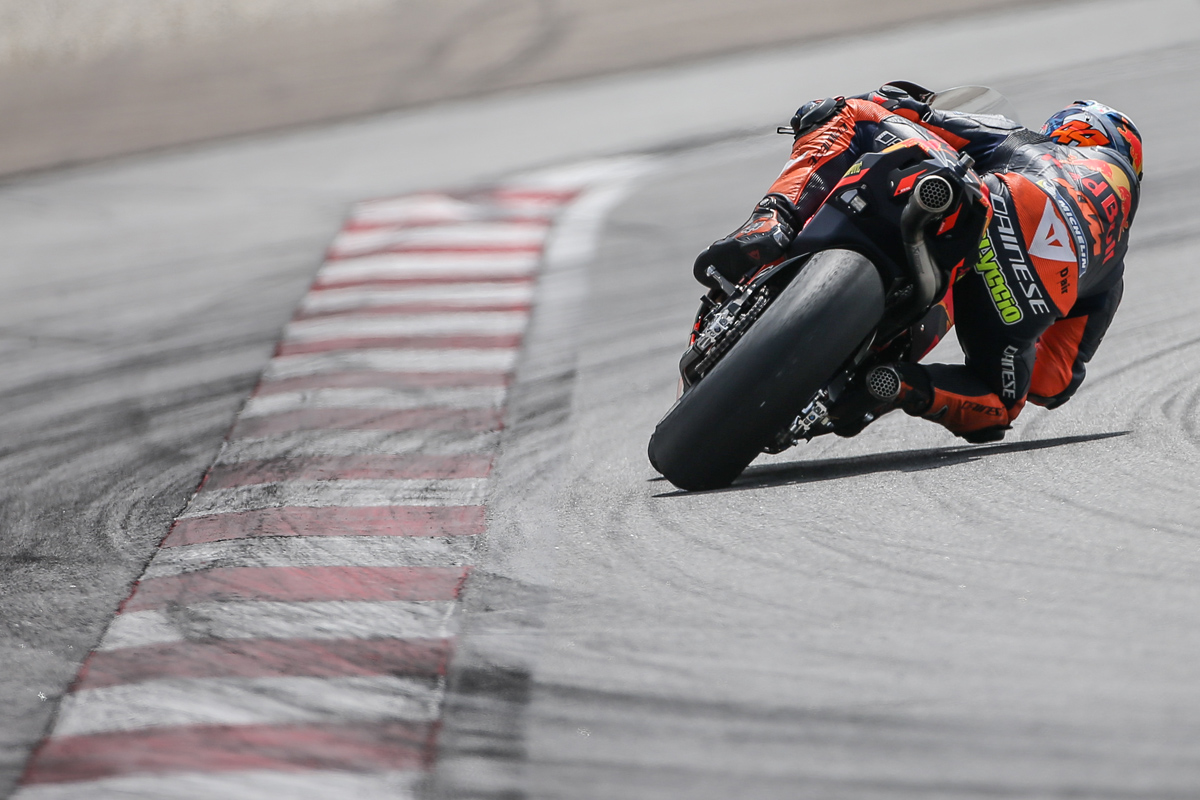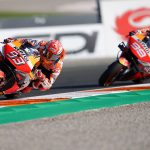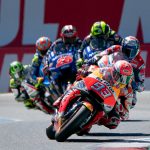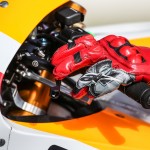The news that Tech3 are to end their association with Yamaha and switch to KTM was a genuine bombshell (and for once, that word is appropriate). Though Hervé Poncharal was finding it ever harder to hide his growing frustration with Yamaha, Tech3 actually abandoning the Japanese manufacturer was a genuine shock. Since Valentino Rossi left Honda for Yamaha, they have won seven of the last fourteen MotoGP championships. Between them, Johann Zarco and Jonas Folger scored four podiums, two poles, and six fastest race laps last year. Why would the Tech3 team give up all that for a bike that has never finished better than ninth?
Lots of reasons. First and foremost because of the promise of extensive factory support from KTM. Traditionally, Yamaha wheeled the factory bikes out of the Movistar garage and into Tech3 after the last race at Valencia. Updates were few and far between. Though precise details of Tech3’s new deal with KTM are yet to be announced, it is clear from Hervé Poncharal’s statements that KTM support will be significantly better. The idea is that Tech3 will be a “junior factory team”, much more closely aligned to the factory, with near-factory spec machinery and direct input into the development process. KTM can use Tech3 as a conduit for young talent coming from Moto2, giving more options than just the factory squad. I fully expect the Tech3 line up next year to consist of Miguel Oliveira and Brad Binder, at least one of whom KTM expects to win the Moto2 championship with this year.
The Tech3 switch caused an earthquake in the MotoGP paddock. But it is really a symptom of the tectonic shift in the underlying structure of the series which has been going on since the 800cc era. The switch from 990cc MotoGP bikes to 800cc proved to be a failed experiment, which, together with the global financial crisis of 2008, almost triggered the collapse of the championship. A rapidly shrinking grid, lack of sponsorship, rising costs, and processional races forced Dorna to take on the might of the factories. CEO Carmelo Ezpeleta challenged the orthodoxies of the MotoGP manufacturers, and committed Dorna to a game of high stakes poker against the factories, united in the MSMA.

When their contracts with the manufacturers ended in 2010, Dorna demanded a number of changes: a rev limit, a spec ECU, and a return to 1000cc bikes, restricted to four cylinders. The MSMA rejected both the rev limit and the spec ECU, but accepted the 81mm maximum bore proposed by Dorna, seeing a technical challenge to get around a de facto rev limit. (In theory, a 81mm bore meant revving beyond 16,500 RPM would be difficult. In practice, MotoGP bikes are already revving well over 18,000 again.) To back up their threats, Dorna introduced the much-maligned CRT class, production engines in prototype chassis. The aim of the CRT bikes was not to challenge the technical supremacy of the factories. It was to send them a message: if you leave in protest over the rules, we can still go racing without you.
The threats worked. The factories stayed. Even better, departed factories expressed an interest in leaving. Ezpeleta called Honda’s bluff, forcing through a spec ECU the next time the contracts were up in 2015, with spec software following in 2016. A series of concessions slowed the top factories down, and allowed the laggards to catch up. Honda grumbled, but remained. Suzuki returned. The bosses of Honda and Suzuki both told me separately that a spec ECU would be reason to leave the sport. Yet they didn’t.
With the technical regulations secured, Dorna turned their attention to the financial side of the series. In 2015, Dorna agreed with the teams and the factories that they would ‘up’ their payments to the teams, and the factories would limit the amount they could charge for leasing satellite bikes. From 2017, teams would receive roughly €1.9 million per rider per season, while factories could charge a maximum of €2.2 million per rider for leasing bikes. Factories also agreed to supply at least two satellite riders, if they could agree terms with a team.
This dynamic is just starting to play out. Tech3 are leaving Yamaha for KTM because, for the first time ever, they have viable options to choose from. KTM may not be competitive now, but the budget and ambition of the Austrians should take them a long way by 2019. Other teams are following a similar path: there are whispers that Marc VDS is considering abandoning Honda to become a Suzuki satellite team. The Angel Nieto team (formerly Aspar) could take on the satellite Yamaha role, at least until the VR46 team arrives after Valentino Rossi retires at some point in the future.
It has taken ten years, but Dorna’s gamble has paid off. Now they just need to reproduce that success in WorldSBK…
Photos by CormacGP








